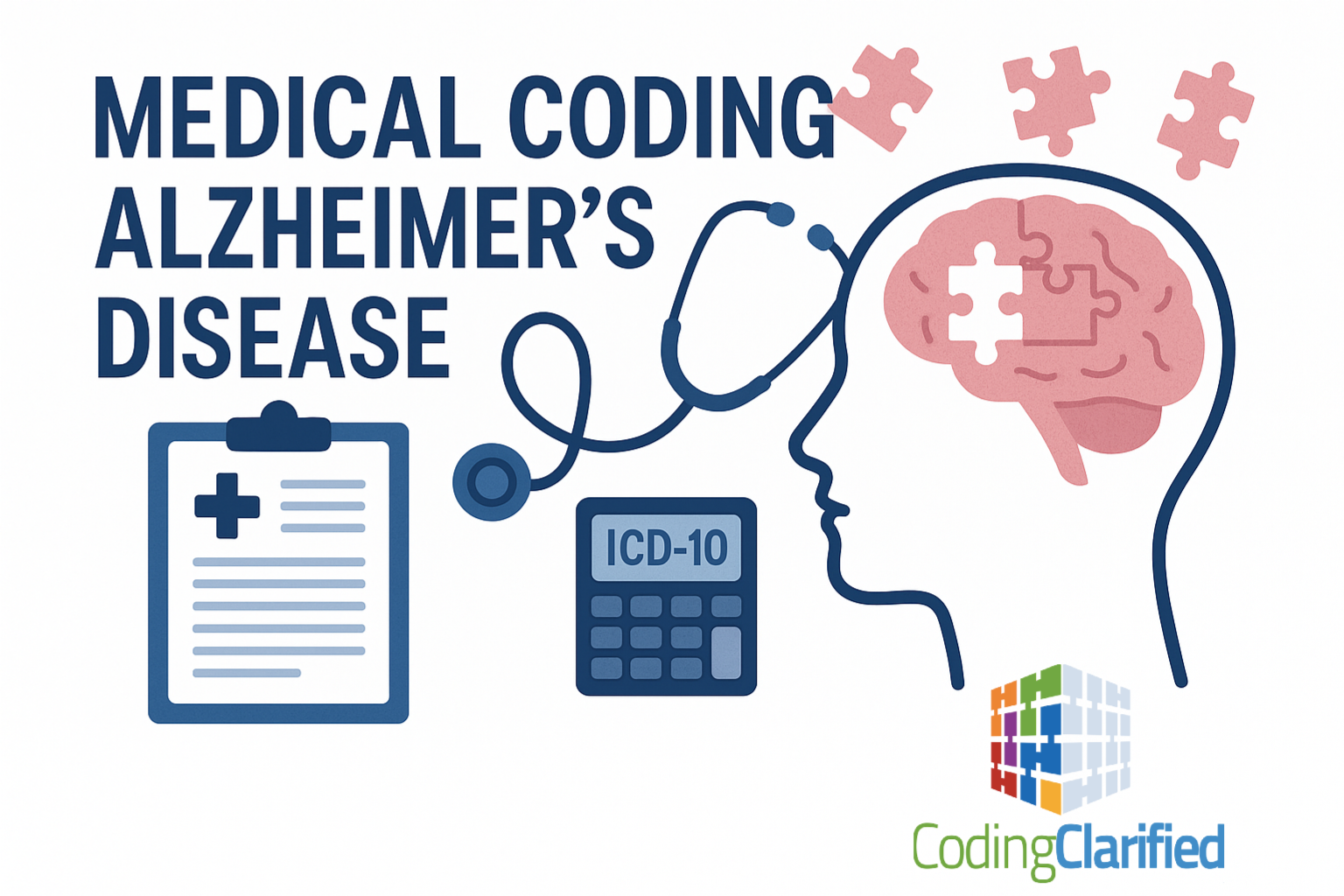Mastering Medical Coding and Billing for Alzheimer’s Disease: Guidelines and Tips
Alzheimer’s disease, a progressive neurodegenerative disorder, is one of the leading causes of disability and dependence among older adults. Accurate coding and billing for Alzheimer’s disease are crucial not only for proper reimbursement but also for clinical documentation and care coordination. This blog provides essential guidelines and expert tips for correctly coding and billing services related to Alzheimer’s disease in compliance with ICD-10-CM and CMS regulations.
Understanding Alzheimer’s Disease in Medical Coding
Alzheimer’s disease is classified under ICD-10-CM category G30, which includes:
-
G30.0 – Alzheimer’s disease with early onset
-
G30.1 – Alzheimer’s disease with late onset
-
G30.8 – Other Alzheimer’s disease
-
G30.9 – Alzheimer’s disease, unspecified
When coding Alzheimer’s, it’s important to determine the onset (early vs. late), the presence of behavioral disturbances, and any comorbid mental or neurological conditions.
Coding Guidelines: Primary vs. Secondary Diagnosis
Alzheimer’s disease is often listed as a primary diagnosis when it is the main reason for a patient’s encounter or when it is being directly managed or evaluated.
-
If a patient presents for complications or symptoms related to Alzheimer’s (e.g., wandering, aggression, cognitive decline), Alzheimer’s should typically be coded as the primary diagnosis.
-
For encounters focused on comorbidities (e.g., diabetes, hypertension), Alzheimer’s may be reported as a secondary diagnosis, provided it affects patient care, management, or treatment.
Use of Additional Codes
In most cases, Alzheimer’s disease should be reported in conjunction with additional codes to capture:
-
Behavioral disturbances:
-
F02.81 – Dementia in other diseases classified elsewhere with behavioral disturbance
-
F02.80 – Without behavioral disturbance
-
-
Cognitive and mood symptoms:
-
R41.81 – Age-related cognitive decline
-
F03.90 – Unspecified dementia without behavioral disturbance
-
F03.91 – Unspecified dementia with behavioral disturbance
-
-
Delirium or psychosis, if present
Tip: Always verify documentation for behavioral and psychological symptoms to code them accurately. Query providers when necessary.
A new blood test, the Lumipulse G pTau217/ß-Amyloid 1-42 Plasma Ratio, has been cleared by the FDA for the early detection of Alzheimer’s disease in adults aged 55 and older who exhibit signs and symptoms. This test detects, amyloid plaques are associated with Alzheimer’s disease, and provides a less invasive and more accessible alternative to existing diagnostic methods.
The HCPCS code for Lumipulse G pTau217/ß-Amyloid 1-42 Plasma Ratio is not a standard HCPCS code. Instead, it’s a Proprietary Laboratory Analyses (PLA) code, specifically, which is CPT code 0358U.
Billing for Related Services
When billing for Alzheimer ’s-related care, ensure documentation supports services such as:
-
Evaluation and Management (E/M) services: Cognitive assessment and care planning
-
Neuropsychological testing
-
Behavioral health interventions
-
Caregiver counseling and coordination
CMS G Codes (used in Medicare billing) such as G0505 (Cognitive assessment and care plan services) may apply.
Tip: Confirm that the patient’s insurance covers the services and that medical necessity is clearly documented.
Common Documentation Pitfalls
Avoid the following errors when coding for Alzheimer’s disease:
-
Using unspecified codes (e.g., G30.9) when specifics are available
-
Failing to code for behavioral disturbances
-
Omitting coexisting conditions or symptoms that impact care
-
Lack of linkage between Alzheimer’s and dementia-related manifestations
Compliance and Ethical Considerations
Coding for Alzheimer’s should reflect:
-
Accurate clinical documentation: Confirm diagnosis in patient record by a qualified provider.
-
Medical necessity: Justify each service and test related to Alzheimer’s care.
-
Regular updates: Stay current with ICD-10-CM guidelines and payer policies, especially for Medicare Advantage plans.
Proper coding and billing of Alzheimer’s disease require a nuanced understanding of its clinical presentations, coding conventions, and payer requirements. By adhering to guidelines and enhancing collaboration with providers, medical coders can ensure that documentation reflects the complexity of care and supports appropriate reimbursement.

